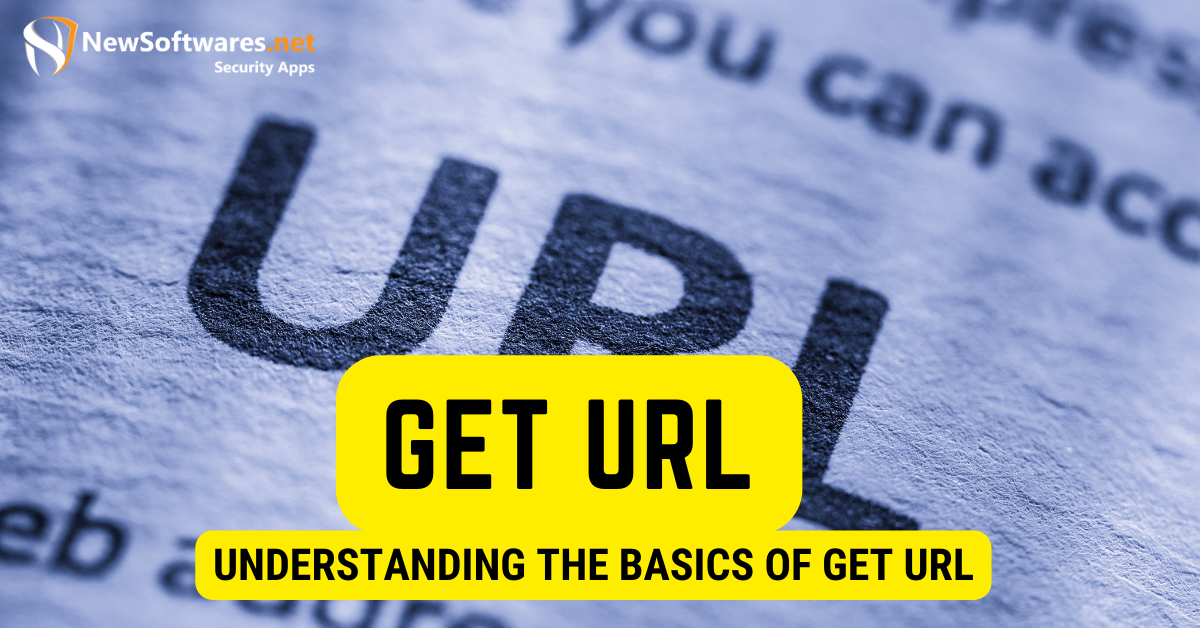To send secure data using a GET URL, one should encrypt the data and use HTTPS protocol.
Sending data securely is crucial in today’s digital age. One method commonly used for data transmission is through the GET URL. However, it is important to understand the basics of the GET URL and its associated risks. In this article, we will determine the importance of secure data transmission and the steps to secure data when using the GET URL.
Understanding the Basics of GET URL

Before securing data transmission via the GET URL, it is essential to comprehend the GET URL. In simple terms, the GET URL is a method used to transmit data over the internet. It is commonly used with HTTP, a protocol that allows communication between servers and clients.
GET URL sends data through the URL itself, making it visible and vulnerable to external threats. Therefore, implementing security measures becomes crucial to protect sensitive data during transmission.
The data is appended to the URL as query parameters when using the GET method. For example, a typical GET URL may look like this: “https://example.com/search?q=keyword.” In this case, the query parameter “q” holds the value “keyword.”
However, it is important to note that sending data through the GET URL poses certain risks. The data becomes visible in the URL, meaning anyone accessing the URL can see the transmitted information. This includes the intended recipient and potential attackers or unauthorized individuals.
Secure data transmission is vital to protect sensitive information from unauthorized access. If data is transmitted without proper security measures, it becomes susceptible to interception, manipulation, and theft. This poses a significant risk to individuals and businesses, as private data can be exposed or misused.
Implementing security measures to protect data during transmission is crucial. One common approach is to use encryption techniques to encode the data before sending it through the GET URL. This ensures that even if the data is intercepted, it cannot be understood or manipulated without the decryption key.
In addition to encryption, other security measures can be implemented, such as protocols like HTTPS, which encrypts the entire communication between the server and the client. This prevents eavesdropping and ensures that the transmitted data remains confidential.
Furthermore, validating and sanitizing the data received from the GET URL on the server side is important. This helps prevent potential attacks, such as SQL injection or cross-site scripting, where malicious code can be injected into the server’s response.
In conclusion, understanding the basics of the GET URL is crucial for implementing secure data transmission. By being aware of the risks associated with transmitting data through the URL and implementing appropriate security measures, individuals and businesses can protect sensitive information from unauthorized access and safeguard the confidentiality and integrity of their data.
The Risks of Sending Data via GET URL
While the GET URL is a convenient method for transmitting data, it comes with inherent risks. Understanding these risks is essential to prioritize data security.
When sending data via the GET URL, being aware of potential security threats is important. One of the main risks is the interception of data during transmission. Since the data is visible in the URL, anybody who has admission to the network can potentially intercept and view the information.
Moreover, attackers can also manipulate the data sent via the GET URL. This can lead to unauthorized access, data corruption, or complete system compromise.
Considering the limitations of using the GET URL for data transmission is crucial. GET URLs have a maximum length limit, typically around 2048 characters. This can pose a problem when transmitting large amounts of data or when sensitive information exceeds the allowed limit.
In addition to the length limitation, GET URLs are cached by web browsers and saved in the browsing history. This further increases the risk of data exposure. Imagine a scenario where confidential information, such as login credentials, is sent via a GET URL. If the user’s browser caches the URL or saves it in the browsing history, it becomes easily reachable to anyone with access to the device.
Furthermore, GET URLs are often included in server logs, which can be accessed by system administrators or attackers. Even if the URL is not stored in the browser, it may still be recorded elsewhere, leaving a trail of potentially sensitive data.
Considering the risks and limitations associated with sending data via the GET URL, evaluating alternative methods for transmitting sensitive information is important. Safe protocols such as HTTPS, which encrypts the data during transmission, can significantly enhance data security.
Additionally, implementing server-side validation and authentication mechanisms can help mitigate the risks of data manipulation and unauthorized access.
By understanding the potential security threats and limitations of the GET URL, organizations and developers can make knowledgeable decisions about the appropriate methods for transmitting data, ensuring the confidentiality and integrity of sensitive information.
Steps to Secure Data Transmission Using GET URL
It is crucial to implement proper security measures to ensure secure data transmission when using the GET URL. The following steps can help enhance data security:
Data Encryption Techniques
Encrypting the data transmitted via the GET URL adds an extra layer of security. Encryption changes the data into a format that can only be understood with the appropriate decryption key. Implementing strong encryption algorithms safeguards that even if the data is intercepted, it remains unreadable to illegal individuals.
Various data encryption techniques can be utilized to secure data transmission. One commonly used technique is SSL/TLS encryption. SSL (Secure Sockets Layer) and its successor TLS (Transport Layer Security) are cryptographic protocols that establish a secure connection between the customer and the server. This encryption ensures that the data exchanged between the two parties is protected from eavesdropping and tampering.
Another effective encryption technique is the use of secure hashing algorithms. Hash functions generate a unique hash value for a given input, making it difficult for attackers to reverse-engineer the original data. By applying a secure hashing algorithm to the data transmitted via the GET URL, the integrity of the information can be maintained, ensuring that it has not been tampered with during transmission.
Using HTTPS for Secure Transmission

Using HTTPS instead of HTTP is another effective way to secure data transmission. HTTPS encrypts the client and server data, preventing unauthorized access or interception. It also verifies the website’s authenticity, reducing the risk of man-in-the-middle attacks.
HTTPS (HTTP Secure) combines HTTP and SSL/TLS encryption. When an operator accesses a website using HTTPS, their browser finds a secure connection with the server, encrypting all data between them. This encryption safeguards that even if an attacker intercepts the data, they cannot decipher its contents.
Website owners need to obtain an SSL/TLS certificate to enable HTTPS for secure transmission. This certificate is delivered by a trusted Certificate Authority (CA) and verifies the website’s authenticity. Configuring the server to use HTTPS involves installing the SSL/TLS certificate and configuring the necessary encryption protocols.
Organizations can significantly enhance the security of data transmitted via the GET URL by implementing data encryption techniques and using HTTPS for secure transmission. These measures protect sensitive information from unauthorized access, ensuring the privacy and integrity of the data.
Best Practices for Sending Secure Data
In addition to implementing specific security measures, following best practices can further strengthen the security of data transmission:
Regularly Updating Security Protocols
It is crucial to stay modernized with the latest security protocols and standards. As technology evolves, vulnerabilities are discovered and fixed. Regularly updating security protocols ensures that you use the most secure data transmission methods.
For example, the SSL/TLS protocols, commonly used for encrypting data during transmission, undergo regular updates to address potential weaknesses. By staying informed about these updates and promptly implementing them, you can maintain a high level of security for your data.
Furthermore, staying informed about security news and updates allows you to address emerging threats proactively. By keeping up with the latest developments in the field of cybersecurity, you can better protect your data from evolving attack techniques.
Implementing Strong Authentication Measures
Verification plays a vital part in data security. Strong authentication measures, such as multi-factor authentication, help safeguard that only authorized individuals can access sensitive data.
Multi-factor verification adds an extra layer of security by requiring users to deliver additional verification beyond just a password. For example, in addition to entering their password, users may need to provide a unique code sent to their mobile device. This two-step verification process significantly reduces the risk of unauthorized access.
Moreover, implementing biometric authentication methods, such as fingerprint or facial recognition, can further enhance the security of data transmission. These methods rely on the unique physical characteristics of individuals, making it extremely difficult for unauthorized individuals to access sensitive data.
By implementing strong authentication measures, you can greatly mitigate the risk of data breaches and unauthorized access, ensuring the confidentiality and integrity of your data.
By following these best practices, you can establish a robust and secure framework for sending sensitive data. Regularly updating security protocols and implementing strong authentication measures are essential to protecting your data from potential threats. Stay informed, stay proactive, and prioritize the security of your data.
Troubleshooting Common Issues
Despite taking all necessary precautions, there can still be challenges or issues related to secure data transmission via the GET URL. Here are a couple of common issues and how to overcome them:
Dealing with Data Leakage

Data leakage, where confidential information is unintentionally exposed, can be a significant concern when using the GET URL. To mitigate this risk, it is important to ensure that sensitive data is properly encoded and encrypted before transmission.
Regularly monitor and analyze your data transmission processes to identify potential vulnerability areas and take appropriate measures to address them.
Overcoming Size Limitations
If you encounter size limitations when sending data via the GET URL, consider alternative methods such as splitting the data into smaller chunks or using other protocols like POST. By working within the constraints and leveraging alternative techniques, you can overcome the limitations and securely transmit the required data.
Key Takeaways
- GET URLs are exposed in browser history, server logs, and referrer headers, making them vulnerable.
- HTTPS (SSL/TLS) encrypts the entire HTTP communication, ensuring data is secure during transit.
- Use URL-safe encoding to ensure that encrypted data is transmitted without errors.
- Never send sensitive data like passwords or personal details using GET URLs.
- Consider using the POST method instead of GET for transmitting confidential data.
FAQs
Q: Is it safe to send passwords in GET URLs?
A: No, sending passwords in GET URLs exposes them in browser history and server logs.
Q: Why is HTTPS important for getting URLs?
A: HTTPS encrypts the entire communication, ensuring data remains confidential during transit.
Q: How can I encrypt data in a GET URL?
A: Use cryptographic methods to encrypt data before appending it to the URL and decode it server-side.
Q: Can hackers see GET URL data?
A: Yes, especially if not using HTTPS. The data can also be exposed in browser history and logs.
Q: Should I use POST instead of GET for sensitive data?
A: Yes, POST is more secure for transmitting sensitive data as it doesn’t expose the data in the URL.
Conclusion
To summarize, when sending secure data using the GET URL, it is crucial to understand its basics, risks, and limitations. Taking appropriate steps to secure the transmission, following best practices, and troubleshooting common issues will help ensure sensitive data’s safety and privacy. By implementing strong encryption, using HTTPS, updating security protocols, and implementing robust authentication measures, you can enhance the security of data transmission via the GET URL.
